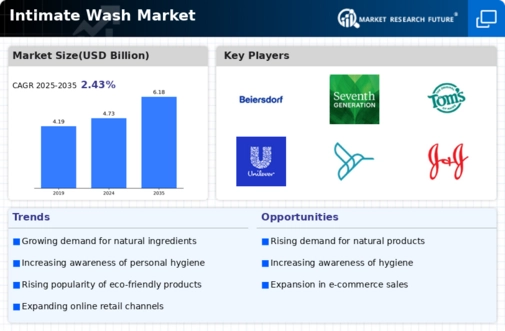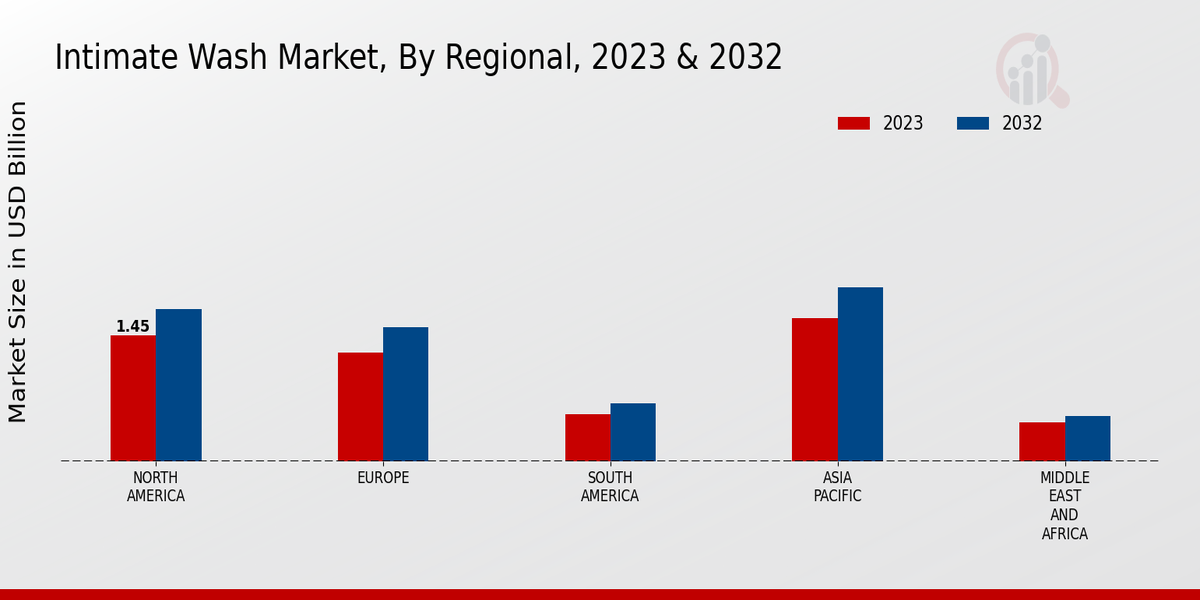The Intimate Wash Market is characterized by a dynamic and competitive environment where a variety of brands and products strive to meet the evolving needs of consumers. Major players in Intimate Wash Market leverage modern marketing strategies, innovative product development, and a strong understanding of consumer preferences to establish their presence. The Intimate Wash Market industry has witnessed a surge in demand for specialized products catering to various demographics, thereby fostering a competitive landscape that emphasizes differentiation in formulation, packaging, and branding.
Leading Intimate Wash Market players are increasingly focusing on natural ingredients and hypoallergenic formulations, aligning with the growing consumer demand for safer, cleaner products. As awareness of personal hygiene grows, brands are also investing in educational campaigns to inform consumers about the importance of hygiene practices, further intensifying competition among established and emerging brands. The Intimate Wash Market development is fueled by continuous research and innovation efforts, where brands seek to improve their product offerings beyond traditional configurations, including pH-balanced and lacto-fermented options, responding to the nuanced needs of consumers.
This competitive landscape is further shaped by e-commerce trends, with online sales channels playing an increasingly significant role in reaching and retaining customers.One prominent name in the Intimate Wash Market is pH Balanced. This brand has carved a niche within the market by emphasizing its commitment to providing products that align with the body's natural ecosystem. Their formulations are designed to maintain optimal pH levels, an aspect that resonates well with health-conscious consumers. pH Balanced continuously invests in research and development to improve their product efficacy while also providing comprehensive information on the benefits of intimate hygiene.
Their marketing strategies often involve partnerships with healthcare professionals and influencers to enhance brand credibility. Additionally, pH Balanced actively engages with their customer base through social media, promoting transparency and encouraging feedback, which is instrumental for staying ahead in the competitive landscape.Another notable competitor in the Intimate Wash Market is Feminine Care Co. This brand has witnessed significant growth due to its focus on developing products specifically designed for sensitive skin types. Feminine Care Co differentiates itself by utilizing organic and sustainably sourced ingredients, appealing to an eco-conscious consumer base.
The company’s marketing approach emphasizes educational content around feminine health, helping to establish trust and authority in the market. Feminine Care Co prioritizes user experience in its product design, ensuring that packaging is both functional and aesthetically pleasing. This attention to detail, coupled with their commitment to quality and sustainability, positions Feminine Care Co strongly against other players. Their ability to adapt to trends and consumer demands exemplifies the competitive nature of the Intimate Wash Market and underscores the importance of innovation in maintaining market share.





















